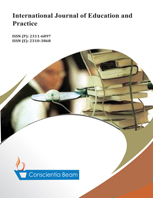Investigating the impact of online learning on mathematical preparedness of first-year engineering students in Eastern Visayas, Philippines
DOI:
https://doi.org/10.18488/61.v13i1.4055Abstract
This study investigated the effects of the sudden shift to online education during the COVID-19 pandemic on the mathematical preparedness of first-year engineering students. This study compared the mathematical readiness of students who graduated from Senior High School (SHS) K-12 programs in 2020 (face-to-face education) and graduates of SHS-2021 (online education) using a College Math Readiness Assessment (CMRA), an assessment tool for college level mathematics. This research used a quantitative-comparative design to investigate the 271 participants (156 from the SHS-2020 cohort and 115 from the SHS-2021 cohort). The findings revealed that 55% of the SHS-2021(online) and 48% of the SHS-2020 (face-to-face) based on their CMRA scores were classified as mathematically college-ready (MCR) for engineering programs. Although the online education cohort had a slightly higher percentage of MCR students, the difference in mean scores between the two groups was not statistically significant (t (210) = 1.97, p =0.15). However, the SHS-2021 cohort showed a wider distribution of scores with higher percentages of students in both the 'excellent' and 'poor' categories than the SHS-2020 cohort. The study concludes that while online learning during the pandemic did not significantly hinder overall mathematical preparedness for engineering programs, the variability in performance among online learners highlights the need for targeted support and interventions to ensure equitable learning experiences and outcomes for all students.





